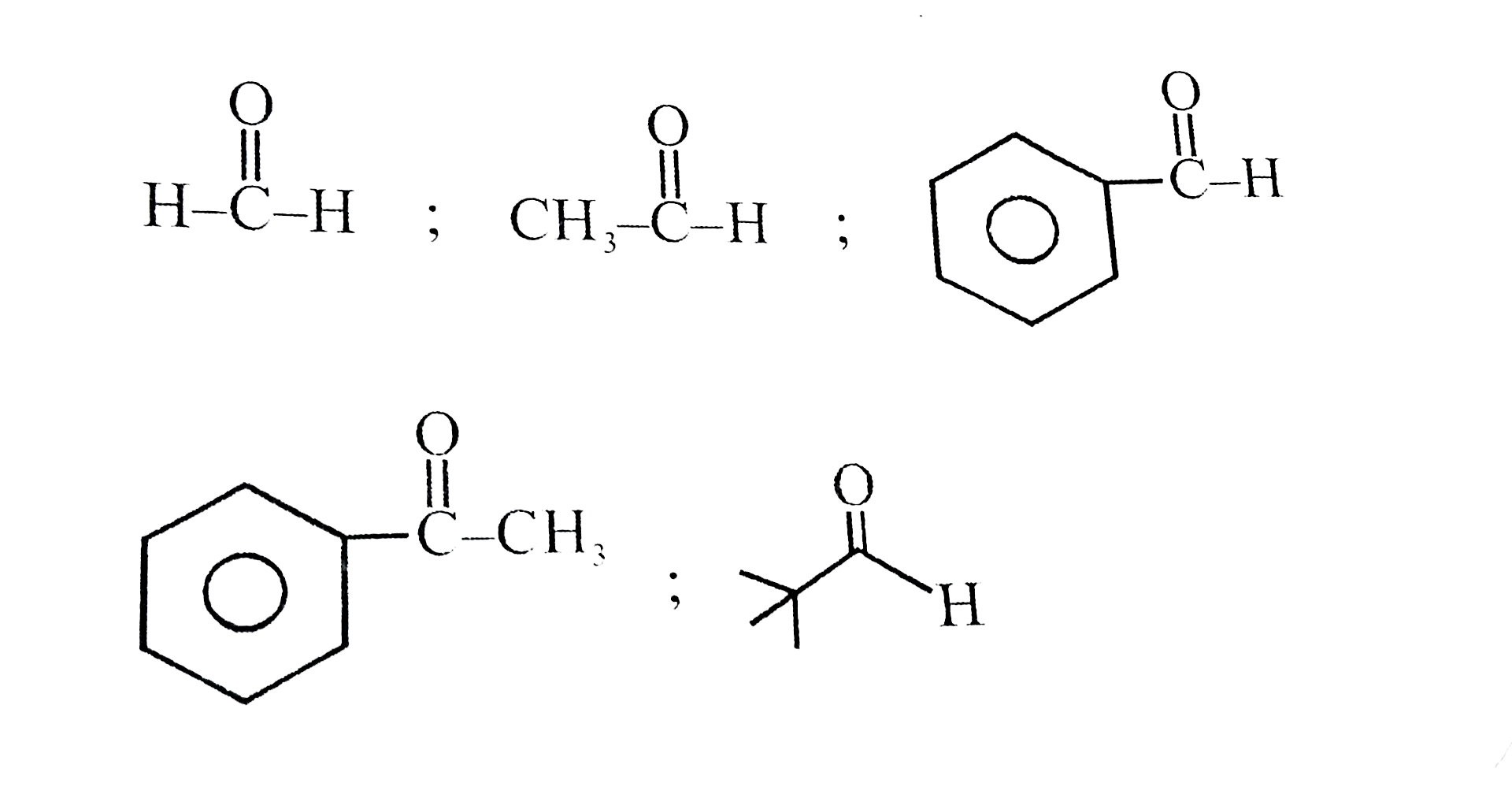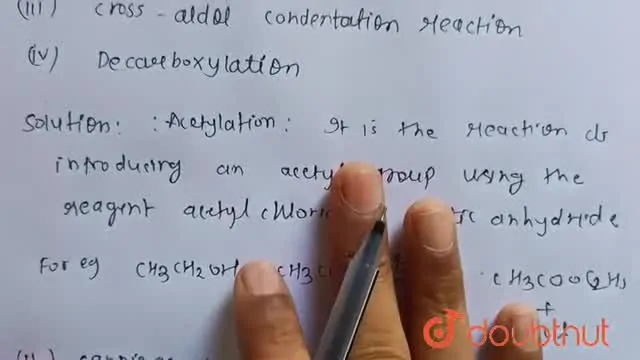Describe the following
i. Acetylation
ii. Cannizzaro reaction
iii. Cross aldol condensation
iv. Decarboxylation
(i) Acetylation refers to the process of introducing an acetly group into a compound namely, the substitution of an acetyl group for an active hydrogen atom. Acetylation is usually carried out in presence of a base such as pyridine, dimethylanitine, etc.
CH3COCl+CH3CH2OHPyridine−−−−→CH3COOC2H5+HCl
(ii) Cannizzaro reaction : Aldehydes which do not contain an a-hydrogen atom, when treated with concentrated alkali solution undergo disproportionation, i.e., self oxidation reduction. As a result, one molecule of the aldehyde is reduced to the corresponding alcohol at the cost of the other which is oxidised to the corresponding carboxylic acid. This reaction is called Cannizzaro reation.
e.g., 2H−O∣∣C−H+NaOH(50%)→CH3−OH+H−O∣∣C−ONa
(iii) Cross aldol condensation: Aldol condensation between two different aldehydes is called cross aldo condensation. If both aldehydes contain a-hydrogens, It gives a mixture of four products.
CH3−O∣∣C−H+H−O∣∣C−HDil. NAOH−−−−−−→HO−CH2−CH2−O∣∣C−H
(iv) Decarboxylation: The process of removal of a molecule of CO2 from a carboxylic acid is called decarboxylation. Sodium salts of carboxylic acids when heated with soda-lime undergoes decarboxylation to yield alkanes.
CH3CH2COONa+NaOHCaO,630K−−−−−−→CH3−CH3+Na2CO3
Related Playlists
- BOOK - NCERT ENGLISHCHAPTER - ALDEHYDES, KETONES AND CARBOXYLIC ACIDSEXERCISE - Exercise28videos
ALDEHYDES, KETONES AND CARBOXYLIC ACIDS
- BOOK - NCERT ENGLISHCHAPTER - ALCOHOLS, PHENOLS AND ETHERSEXERCISE - EXERCISE45videos
ALCOHOLS, PHENOLS AND ETHERS
- BOOK - NCERT ENGLISHCHAPTER - AMINESEXERCISE - Exercise23videos
AMINES
Similar Questions
Describe aldol condensation.
View SolutionDescribe aldol condensation.
View Solution(a) Illustrate the following reactions giving a suitable example for each.
(i) Cross aldol condensation
(ii) Decarboxylation
(b) Give simple tests to distinguish between the following pairs of compound
(i) Pentan-2-one and pentan-3-one
(ii) Benzaldehyde and Acetophenone
(ii) Phenol and Benzoic acidView SolutionGive Examples of the following:
Crossed-Cannizzaro reactionView SolutionHow many compounds gives Cannizzaro reaction and aldol condensation respectively
 View Solution
View SolutionComplete the following reaction : i.

ii.
iii.
iv. View Solution
View SolutionAccount for the following :
(i) CH3CHO is more reactive than CH3COCH3 towards reaction with HCN.
(ii) Carboxylic acid is a stronger acid then phenol .
(b) Wrtie the chemical equations to illuustrate the following reaction :
(i) Wolff-Kishner reduction
(ii) Aldol condensation
(iii) Cannizzaro reactionView SolutionExplain the following reactions :
Aldol condensationView SolutionWrite chemical equations to illustrate the following name bearing reactions: (i) Cannizzaro 's reaction
(ii) Hell - Volhard -Zelinsky reactionView SolutionGive a brief account of the following reaction:
Cross-Aldol condensationView Solution


